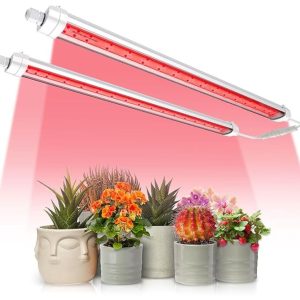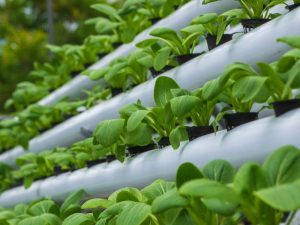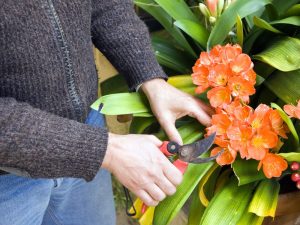Last Updated on February 5, 2025 by teamobn
You don’t need a large estate to grow a variety of fruits at home. If space is a problem, you can plant dwarf varieties. You can also try pruning and training trees on a trellis. Even container growing is possible.
However, fruit-bearing trees and plants can be a bit picky about location. You should plant them in well-draining soil in a space that receives full sun. They will also need good air circulation and protection from wind and cold weather.
Easy Fruits to Grow in Your Backyard
Contents
Mail-order nurseries tend to offer more tree and plant varieties than garden centers. If you want a broad selection, you should start there.
If you’re unsure about which variety to buy, your local nursery likely carries plants that thrive in your area.
Below are some of the best fruit you can grow in your garden.
Blueberries
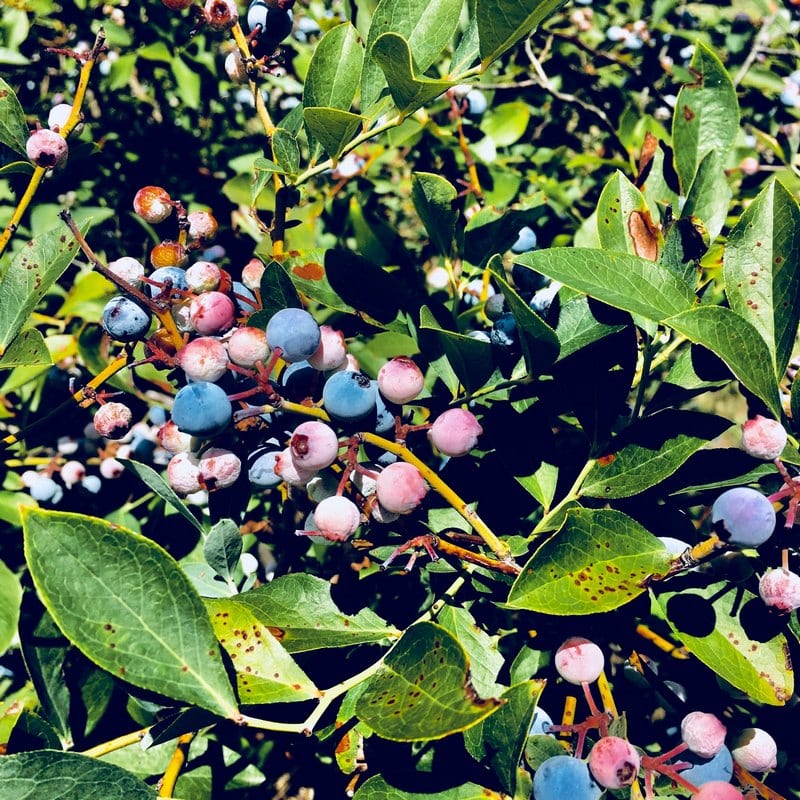
Growing blueberries requires some advance work. The shrub thrives in well-draining soil with a pH between 4.5 and 5.0. Conduct a soil test on your space. If your soil lacks the required the acidity, you can grow blueberries in a container. All they will need then is an ericaceous (acidic) compost, which you can buy in your local garden center.
Blueberries are low maintenance. They begin to bear fruit after about 3 years. In the meantime, they make lovely patio plants. The shrubs will live and produce for years. For a large harvest, you will need two varieties for pollination.
Strawberries
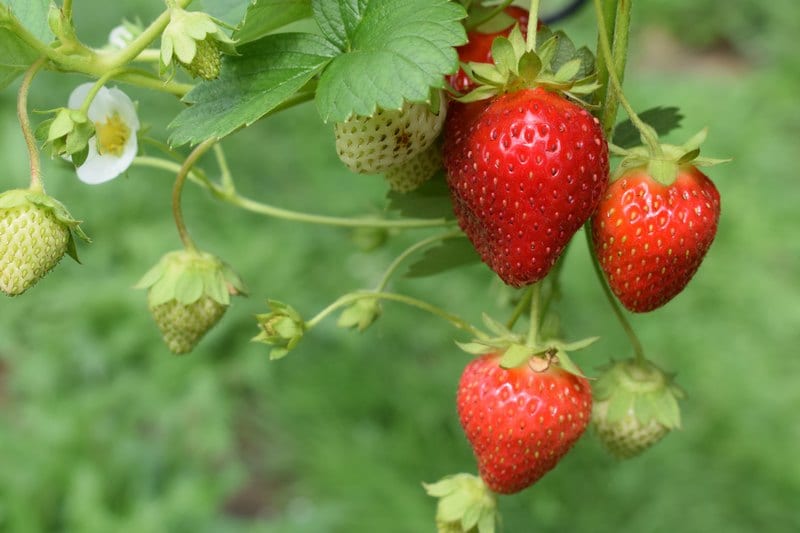
You can grow three types of strawberry. The June-bearing variety produces one large crop. They bear fruits that are good for preserves and freezing. Everbearing strawberries produce two to three smaller harvests each season. Day Neutral strawberries bear small amounts of fruit throughout the season.
While strawberry plants are easy to grow, they don’t survive for long. You will have to replace or rejuvenate them every three to five years.
Cherries
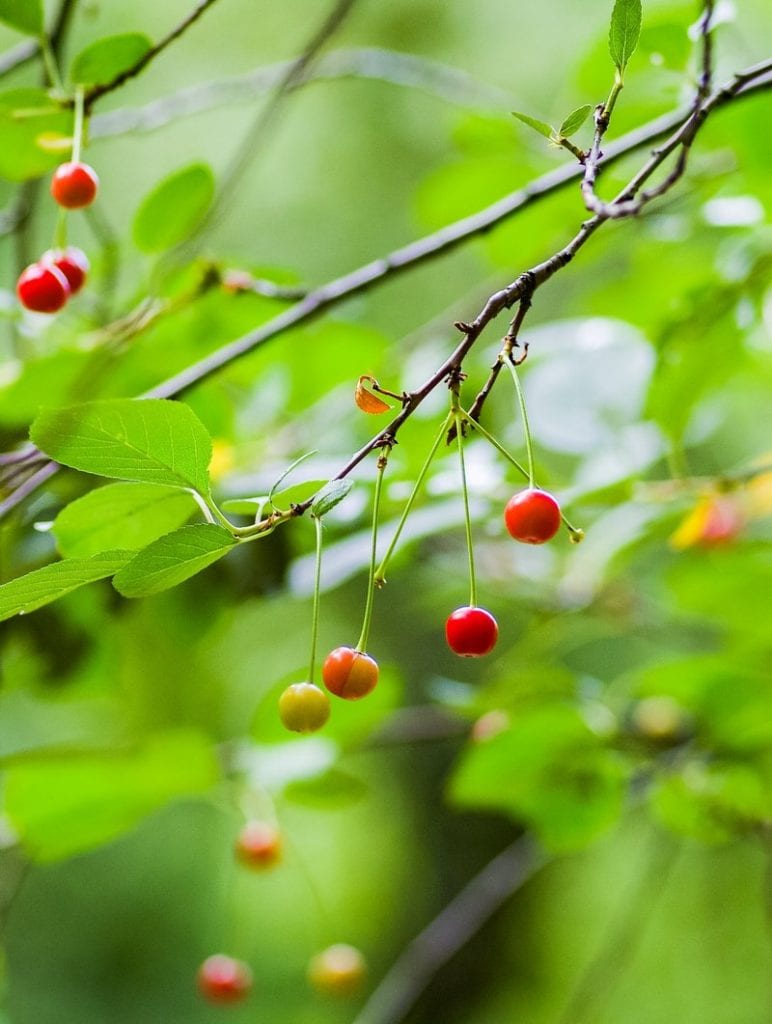
Cherries are one of the easiest fruit trees to grow. They require minimal to no pruning and are rarely plagued by pests or diseases. Sweet cherries require two trees for cross-pollination. You can also buy a tree with two different varieties grafted on it – which is a great space saver.
Cherries grow best in deep, well-draining soil with adequate organic matter. They thrive in cooler, less humid climates. In Australia, they are an excellent choice for gardens and backyards across much of the southern states, Tasmania, and the highlands. In the USA, cherries are best suited up to Zone 8 but will also grow well along the Pacific North-West.
Figs
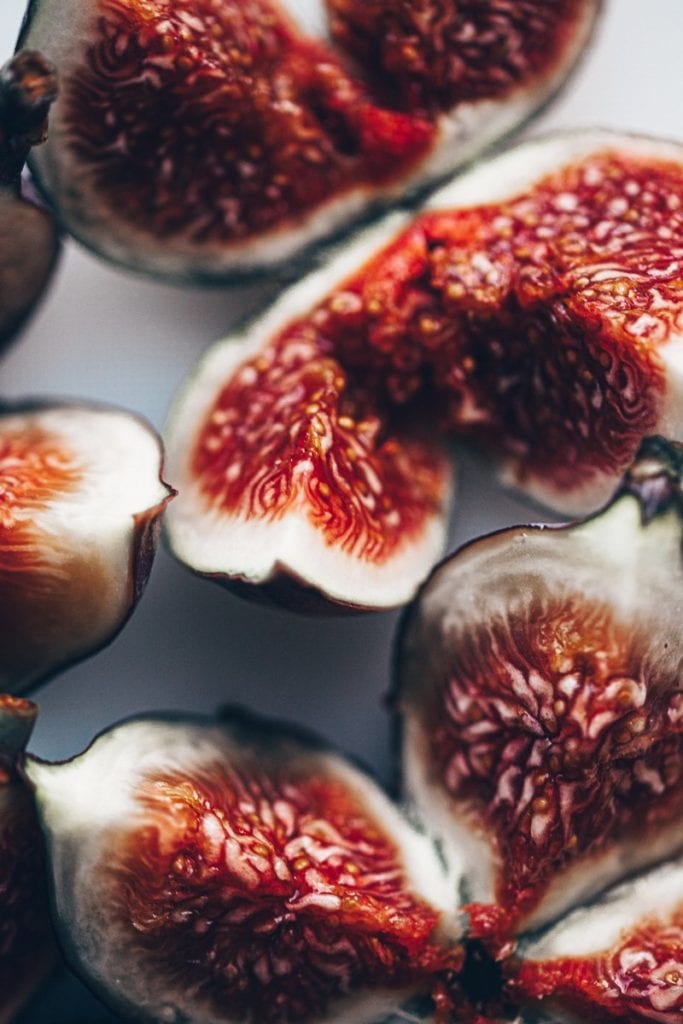
Fig trees are easy to grow either in the ground or in containers. Most fig varieties are only hardy down to USDA hardiness zone seven. But a few cultivars are hardier. You can also grow your tree in a container.
If you grow your fig tree in a container, you can move it indoors for the winter. Just remember to keep the container small. The more confined the roots, the smaller the top of the tree will remain. Even then, you can expect an abundant harvest of figs.
Citrus
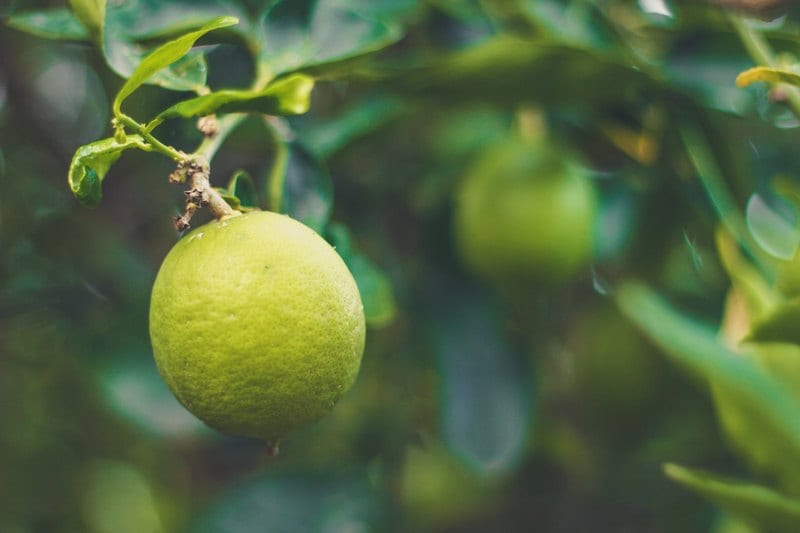
Citrus varieties include oranges, kumquats, and grapefruit. These make excellent container plants and are prolific growers. When planting citrus, you should watch the salt levels of the soil. Citrus plants are prone to salt damage.
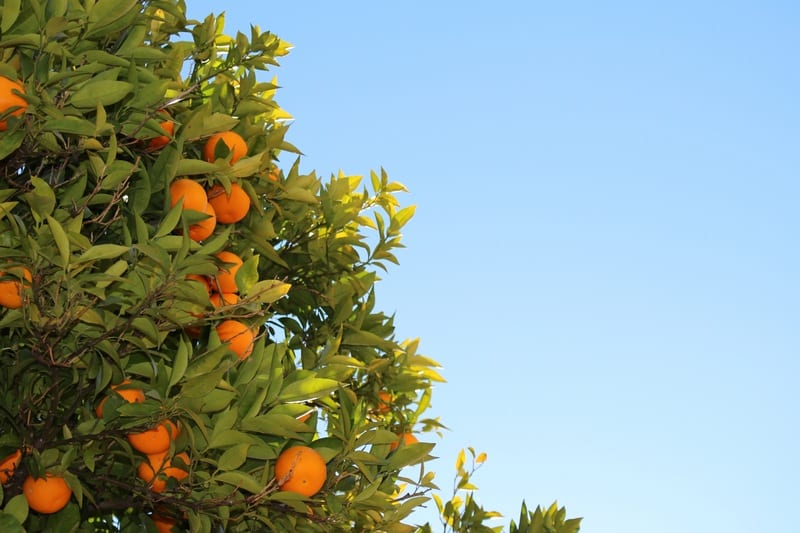
Proper soil drainage is crucial for eliminating excess salt. However, regular watering can eventually clear salt from porous soil.
Raspberries
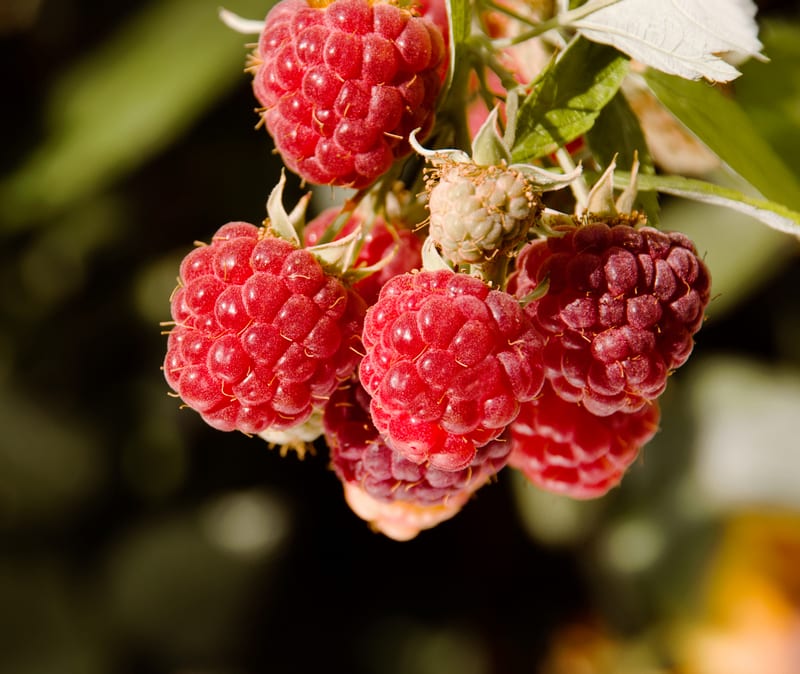
Raspberries grow best in cooler regions. Plant raspberry seeds in well-drained soil in a sunny spot. Mix in some compost to give them a running start. Winter is the best time to plant them. That’s when nurseries and mail-order companies sell virus-free single canes.
Raspberries grow 4 to 6 feet high. Their canes will start to arch as the fruit ripens. If you intend to plant raspberries in a container, you’ll need a trellis to manage their growth.
Maintenance Tips
Keeping a clean garden means picking up after your trees. Fruit that drops to the ground can contain insect larvae. These can burrow into the soil where they overwinter to re-emerge in the spring.
Fruit left on the ground will also attract voles and mice. These critters can damage trees by chewing on the bark.
This is why you should pick up any dropped fruit and burn or bury it far from your trees. Do this as soon as possible to catch the larvae before they make it into the ground.
It’s especially important to collect the spring drops. These are still small but they can contain a large number of larvae.
You should also clean up fallen leaves as these can likewise harbor disease and insects.
How to Grow Fruits Indoors
Growing fruit indoors is an excellent way to enjoy fresh produce year-round, even if you don’t have a garden. Many easy fruits to grow adapt well to containers, thriving on sunny windowsills or under grow lights. By providing the right conditions, you can cultivate delicious fruits inside your home with minimal effort.
Choosing the Right Fruits for Indoor Growth
Not all fruits are suited for indoor gardening, but several varieties flourish in containers. Citrus trees like lemons, limes, and kumquats do well indoors, producing fruit even in limited space. Strawberries are another great option, as they grow in hanging baskets and small pots. Figs, raspberries, and dwarf blueberries can also thrive indoors with proper care. Many easy fruits to grow don’t require large root systems, making them perfect for container gardening.
Selecting the Right Containers
Container size plays a crucial role in indoor fruit gardening. Small pots work for strawberries, but larger fruits like dwarf citrus trees need at least a 10- to 12-inch diameter container. Ensure pots have drainage holes to prevent root rot. Using well-draining, nutrient-rich soil helps fruits establish strong roots and absorb essential nutrients.
Providing Proper Lighting
Light is one of the biggest challenges when growing fruit indoors. Most fruiting plants need at least six to eight hours of sunlight per day. South-facing windows work best, but if natural light is limited, supplement with LED grow lights. Blue and red spectrum lights encourage strong growth and fruit production. Rotating plants occasionally ensures even exposure to light.
Managing Temperature and Humidity
Indoor fruit plants thrive in stable temperatures. Most prefer daytime temperatures between 65-75°F, with slightly cooler nights. Citrus trees and figs need humidity, which can be increased with a pebble tray or misting. Avoid placing plants near heating vents, which can dry out leaves and soil too quickly.
Pollination and Flowering
Some indoor fruits, like strawberries and figs, self-pollinate. Others, such as citrus trees, may need a little help. When flowers appear, gently shake the plant or use a soft brush to transfer pollen between blossoms. Proper pollination increases fruit yield and ensures healthy development.
Watering and Fertilization
Consistent watering is key, but overwatering can cause root rot. Water when the top inch of soil feels dry, allowing excess moisture to drain. Indoor fruit plants benefit from organic fertilizer every few weeks during the growing season. Slow-release fertilizers or liquid options high in potassium encourage flowering and fruit production.
Pruning and Maintenance
Regular pruning keeps indoor fruit plants healthy and manageable. Removing dead or yellowing leaves prevents disease and improves air circulation. Dwarf citrus trees and berry plants benefit from light trimming to encourage new growth. Training plants with stakes or small trellises helps them grow upright, maximizing space efficiency.
Common Challenges and Solutions
Growing fruit indoors comes with a few challenges. Limited light, dry air, and poor pollination can reduce fruit production. Investing in grow lights, maintaining humidity, and manually pollinating flowers can help overcome these obstacles. Pests like spider mites and aphids can also be an issue. Washing leaves with soapy water or using neem oil keeps infestations under control.
Enjoying Homegrown Fruits Year-Round
Indoor fruit gardening offers fresh produce no matter the season. With the right conditions, many easy fruits to grow will produce multiple harvests throughout the year. Strawberries, dwarf blueberries, and citrus trees can provide a steady supply of fruit with proper care. Whether you have limited outdoor space or want a fun indoor gardening project, growing fruit inside is a rewarding experience.
Organic Gardening Tips for Growing Fruit
Growing fruit organically allows you to enjoy fresh, chemical-free produce while promoting a healthier environment. With the right techniques, even beginners can cultivate a thriving garden without synthetic pesticides or fertilizers. Many easy fruits to grow adapt well to organic methods, producing delicious harvests with natural care.
Preparing Healthy Soil
Healthy soil is the foundation of any successful organic garden. Enrich it with compost, aged manure, or organic matter to improve drainage and fertility. A balanced soil structure helps retain moisture while providing essential nutrients for fruit trees and plants. Natural amendments like bone meal, rock phosphate, or worm castings can enhance fertility without synthetic additives if your soil lacks key minerals.
Choosing Disease-Resistant Varieties
Some fruit varieties are naturally resistant to pests and diseases, making them ideal for organic gardening. Blueberries, figs, and raspberries are examples of easy fruits to grow with minimal intervention. Selecting hardy varieties suited to your climate reduces the need for chemical treatments and ensures a higher yield. Local nurseries often carry fruit plants adapted to your region’s growing conditions.
Encouraging Natural Pollination
Pollination is essential for fruit production, and organic gardening encourages natural pollinators like bees, butterflies, and hummingbirds. Planting companion flowers such as lavender, marigold, or sunflowers attracts beneficial insects to your garden. Avoid using chemical pesticides that can harm pollinators, and instead, create a welcoming habitat with diverse plants.
Organic Pest and Disease Control
Maintaining fruit plant health free from pesticides calls for aggressive insect control. Aphids and other common pests are reduced by encouraging helpful insects such as ladybugs and praying mantises. Natural defense against damaging insects comes from homemade insecticidal soaps, neem oil, and diatomaceous earth. Spraying with a diluted solution of baking soda or copper sulfate will assist in stopping the spread should fungal illnesses start to cause problems.
Watering and Mulching Strategies
Though overwatering can cause root rot, consistent watering promotes robust fruit development. By delivering water straight to the roots, a drip irrigation system cuts waste and helps to minimize fungal problems. Mulching shredded leaves, wood chips, or straw helps control soil temperature, hold moisture, and stifle weeds. As it breaks down, organic mulch also improves the soil, benefiting fruit-bearing plants.
Composting for Nutrient-Rich Fertilization
Among the greatest organic fertilizers available for fruit production is compost. It enhances soil structure, supplies vital minerals, and encourages helpful bacterial activity. To make a naturally occurring, nutrient-dense fertilizer, compost kitchen wastes, grass clippings, and plant material Applied around fruit trees and shrubs in spring and fall, a layer of compost maintains them well-fed all through the growth season.
Pruning and Plant Maintenance
Regular pruning keeps fruit plants healthy and productive. Removing dead or diseased branches improves airflow and reduces the risk of fungal infections. For easy fruits to grow like raspberries and blueberries, annual pruning encourages new growth and higher yields. Keeping the area around fruit trees clean by removing fallen leaves and rotting fruit prevents pest infestations and disease outbreaks.
Crop Rotation and Companion Planting
Rotating fruit crops and using companion planting techniques can naturally deter pests and improve soil health. Planting garlic or chives near fruit trees helps repel insects, while marigolds discourage nematodes and other soil-borne pests. Mixing fruit plants with legumes like clover or beans enhances nitrogen levels in the soil, promoting healthier growth without synthetic fertilizers.
Enjoying a Sustainable Harvest
Organic gardening takes patience and careful management, but the rewards are worthwhile. You can cultivate a sustainable garden filled with fresh, chemical-free fruit by nurturing the soil, using natural pest control methods, and encouraging biodiversity. Many easy fruits to grow thrive under organic care, providing abundant harvests for years.
Choose fruits that are suited to your climate and time availability…
Even the hottest climates suit some fruits. Mango, banana, figs and pineapples immediately come to mind. Papaya (paw paw), pomegranate and even coffee are others.
All of the above are low maintenance. If you have time, there are more exotic fruits like custard apple, loquat and even cashew.
Most citrus are extremely adaptable and very forgiving of neglect.
It’s up to you to choose for your climate. Avocados won’t grow where it snows, and raspberries aren’t going to handle the tropics. But the selection available for your climate is probably far bigger than you ever imagined.
Feeling inspired? Or do you already grow fruit in your garden? We’d love to hear about your experiences!
We have more fruit growing guides. Check out our guide on growing fruits in containers next!

